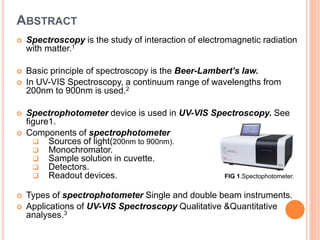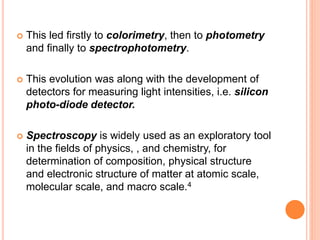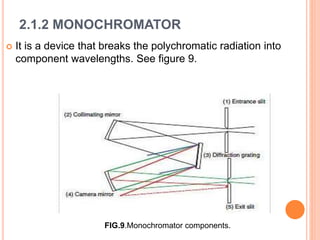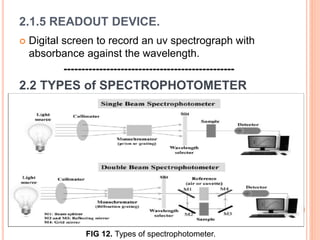UV-VIS spectroscopy is a technique that uses the ultraviolet and visible regions of the electromagnetic spectrum to analyze materials. It works based on the Beer-Lambert law, where absorbance is proportional to concentration and path length. The main components of a UV-VIS spectrophotometer are a light source, monochromator, sample cuvette, photodetector, and readout device. It can be used for qualitative and quantitative analysis in fields like chemistry and biology to identify compounds and determine concentrations.





















